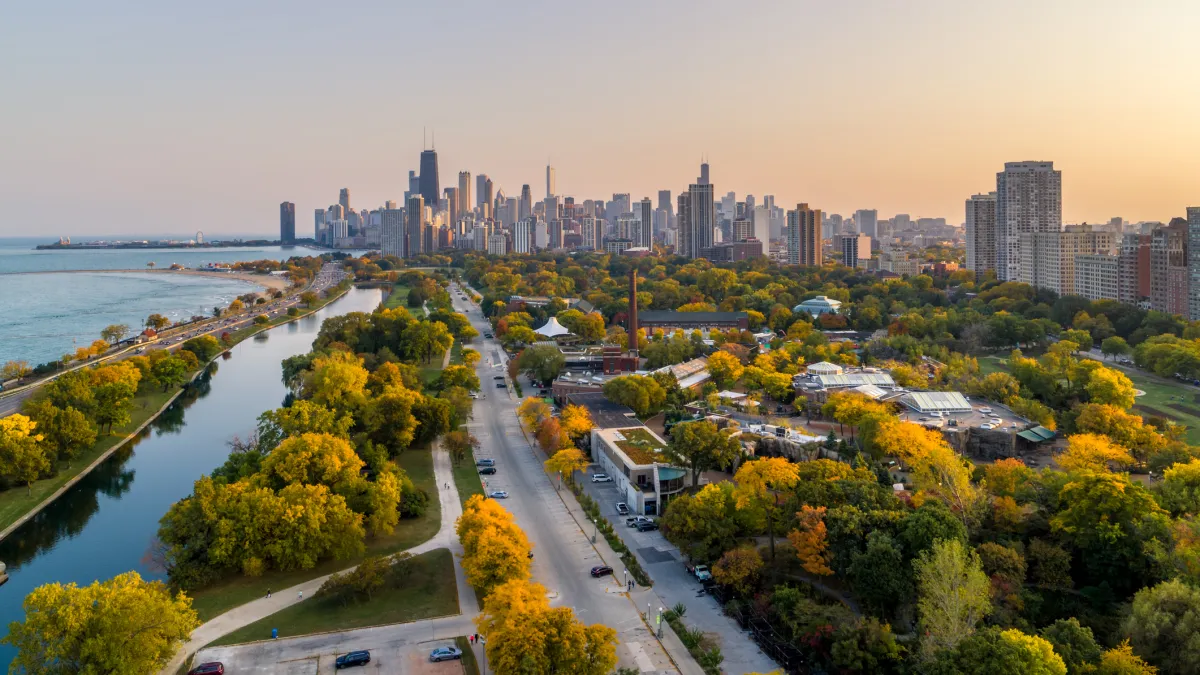By NBC Chicago Staff
Copyright nbcchicago

With the season set to soon change from summer to fall, the leaves on some trees in Illinois have already started to change from green to vibrant colors.
But it’ll still take some time for peak fall foliage to hit in the Chicago area, especially in the city.
With the autumnal equinox set for Monday, Sept. 22, here’s a look at when you can expect the leaves to change colors across the state, and when they’ll hit their peak.
Illinois fall foliage map
According to Illinois’ fall foliage map, leaves are already showing “minimal” signs of change.
By the end of September, the transition will be in full swing, the Illinois Trip Planner from the Department of Natural Resources predicts, particularly for northern Illinois and then spreading south into central Illinois.
Early-to-mid October
Once October arrives, colors are expected to begin changing across much of the Midwest, including in far northwest Illinois and in Wisconsin.
By Oct. 15, some of the more moderate color changes are expected across northern Illinois, spreading into other parts of the state by Oct. 20.
According to the map, estimated peak times for leaves from Galena, through the Chicago area and down to Starved Rock are between the second and final weeks of October.
Late-October
Peak colors typically continue in the Chicago area and Illinois through late-October.
By the end of October, the northern region of the state starts to enter the “past peak” phase.
For central Illinois, the estimated peak time is slightly behind the northern portions of the state, according to Enjoy Illinois.
By the time November arrives, fall leaves are expected to be past their peak in most of the state — except for a sliver of Chicago, NBC 5 Storm Team Alicia Roman pointed out, according to Explore Fall.
“A lot of the city here may be even later than the entire state,” Roman said. “We still have some time.”
Many cities see delays in change over suburban and rural areas, Roman said, as tree species are different. The urban heat island effect could also delay vibrant fall colors, since night temperatures may not be as cool as temperatures inland.
“Environmental stressors and pollution could also lead to duller colors in the city,” Roman added.
What else could impact timing?
There are some factors that can change just how colorful the leaves turn and how long they last.
Trees usually start changing as the days continue to get colder and nighttime temperatures get consistently quite cold – into the low 40s, 30s or even lower.
NBC 5 Storm Team Meteorologist Kevin Jeanes said in general, a hot and dry summer can dampen the brightness of leaf colors.
Morton Arboretum and its research partners found trees respond to extreme weather conditions over longer time periods — several weeks or more — compared to short-lived heat waves or dry spells.
Why do tree leaves change color?
While it appears peak colors won’t emerge for several weeks, you might be wondering what causes trees to change color in the first place — or what causes the vibrant hues.
Trees with leaves that change colors are green most of the year because of the chlorophyll they use to absorb energy from sunlight during photosynthesis, according to the an article by the Smithsonian Institute.
But when temperatures drop and days get shorter, trees get less direct sunlight, and the chlorophyll in the leaves breaks down.
“How much and how fast leaves transform varies by location on the globe,” the article explained. “The best colors are produced when the weather is dry, sunny and cool. Places that are cloudy, damp or warm won’t see the same degree of changing color.”



